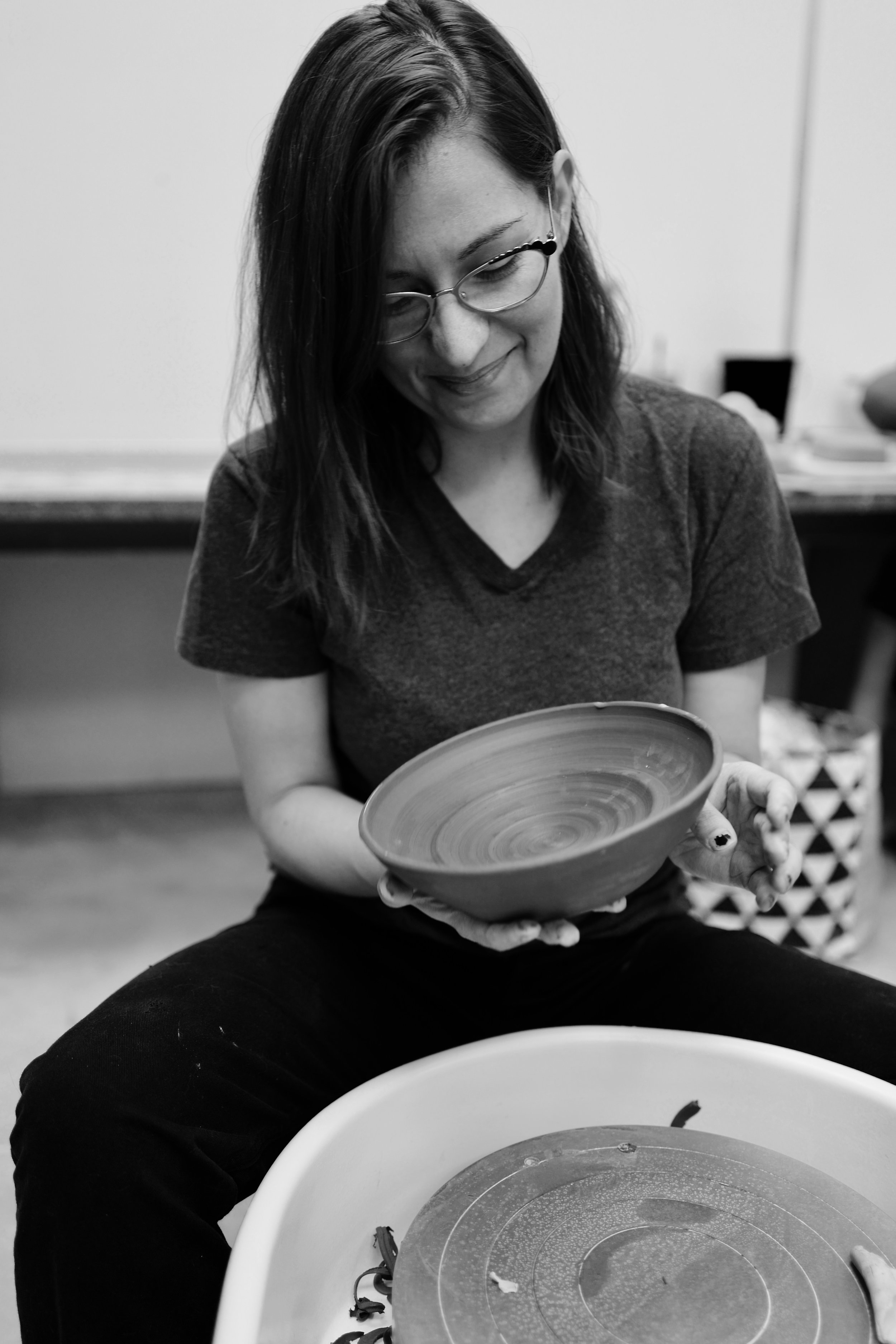Hello!
I am ceramicist based in Los Angeles. I make functional pottery in my home, where my work is usually taking over the dining room table and/or getting clay crumbs in the bed. My work is mainly informed by two forces: love for clay and physical limitations. Living with a chronic pain condition and increasingly low mobility has meant profoundly adapting my studio practices. Making ceramics is quite literally back breaking, even for people who don’t live with spina-bifida, and it’s hilarious that it happens to be the thing I love and need to do.
My last day of wheel work, Summer 2017
In the early 2000’s, I was studying painting at Hunter College. After one semester of clay I switched my concentration to ceramics. After graduating, I assumed I was a lifer at the wheel. I was much more able and agile at this point, and fell in love with the process. Initially I was motivated by the desire to ‘best’ the clay. To make it do my bidding, to refuse to let it move me, for I controlled it. Over time that mindset proved so naive. In order to really get it, you have to learn to listen to the clay. It will tell you what it needs and what you do with that info is the art and skill of the thing.
In 2016, after nearly 15 years of wheel work, my spine condition was sent into rapid decline by a failed surgery, and I thought I’d have to stop altogether. That time was awful. A part of me was missing, and it became clear to me that it isn’t an option to not have clay in my life. Thank heaven for hand building!
Coil-built vase, 2018
It felt forced, at first, to make the switch from the wheel, but in the change there was learning, and the process of hand building has enriched and expanded my thinking when it comes to form, function, and practice. It doesn’t feel like a limitation but rather made room for a deeper understanding of the material. It also allows for an almost entirely home-based practice, which is crucial to any productivity for me, since car travel is strenuous and I need to lie down extremely often (I can’t sit for longer than 15 minutes before the pain clock starts counting). Hence, the bed full of clay crumb.
This is spoonie life. I have had to learn to listen to my body’s signals, much like I had to learn to listen to clay. I have had to plan around pain, and to (occasonally) accept the slower pace of things, often setting timers so I don’t get so absorbed in the clay I forget to take lie-down breaks.
A lie down break, 2020
In ceramics, “clay body” refers to the characteristics of a given clay type. It describes how much heat it can take, how much tooth it’s got. How it feels and how fussy it is and how much it can forgive your mistakes. It’s cathartic and meaningful to think of the clay as a body when i’m working with it. Clay shows you what it’s made of. It can hold feelings and remembers everything. The way the clay reacts to what I do is what inspires me, as well as the enormous depth of symbolism held in every mark, dent, shape and texture. The work is a meditation on wholeness, pain, and embodiment, while aiming to deliver on function, pleasure, and usefulness. In the end, it’s a record of the interaction between me and the materials, of the measures I’ve taken to keep clay in my life, and hopefully it’s an object of some use and beauty.




